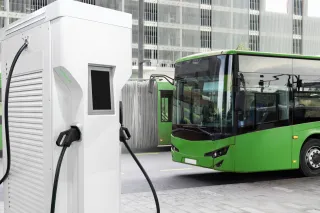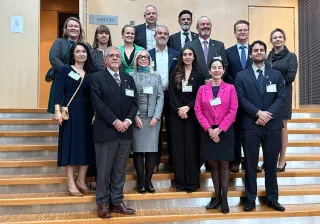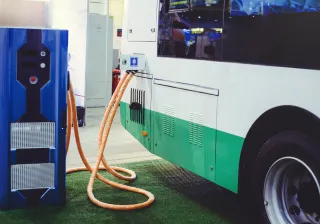More and more people are driving electric cars, and electric buses are opening up options for low-carbon public transport. But our infrastructure is not ready to accommodate the growth of electric transport. VTT is focusing on three development areas to turn Finland into a model country for electric transport. “Right now we need strong coordination to set up shared charging systems”, says Ari Aalto, the new Vice President of VTT’s Mobility and Transport research area.
According to VTT’s forecast, emissions from Finnish road transport will decrease faster than expected by 2030, thanks to electric cars. Electricity is also powering public transport: for example, the City of Kotka will electrify its entire public transport by 2023. The overall picture says a great deal about Finland’s potential as a pioneer of electric transport and developer of export products. But we are not quite ready yet; progress requires even closer cooperation between public and private actors.
To avoid being left in the dust while the rest of the world passes us by, Finland needs to take to heart these three insights from VTT experts.
1. We need to ensure the efficient electrification of commercial vehicles, such as taxis and vans.
The electrification of taxis and vans is a particularly low-hanging fruit and an important one for cutting emissions. For example in Helsinki, fine particulate matter emissions from vans account for as much as 33% of all fine particulate matter emissions of traffic. The number of electric taxis and vans will increase in the future, but the charging network is not robust enough to support growth, creating a bottleneck. Commercial vehicles may cause queues at fast charging stations meant for passenger cars. For this reason, they need to their own charging infrastructure with licences and operating models that support the establishment of this infrastructure, as well as favourable market places for charging electric taxis, for example.
High-power charging technology is already available on the market for taxis and vans. But if development depends solely on the establishment of market-based charging services, the change will not happen quickly enough. Public support offered for charging infrastructure should be targeted more innovatively so that it also supports commercial vehicles. Especially cities and public actors must now recognise their new role in enabling and promoting this change – from words to actions!
2. Shared charging systems have to be developed for heavy duty electric vehicles.
The electrification of trucks is only just starting. Finland is still missing private and shared scalable charging infrastructure for heavy traffic, such as electric trucks. Since growth in the number of electric commercial vehicles requires a complete charging infrastructure that meets practical needs, this early stage is when it is worth investing in shared charging systems in urban environments, suitable for both large and small vehicles.
Developing a shared charging infrastructure requires cities to carry out pilots boldly. Charging takes up valuable land area that should not be wasted on many different solutions. Existing rest stops and parking areas should be utilised to their full extent. Charging infrastructure that is used effectively is cost-effective and improves the profitability of investments. VTT has piloted a shared charging system with HSL in a project where operators built a shared charging unit for commercial vehicles in Hakaniemi.
“We need an operating model template for cities and companies; we can’t have it take years to set up one unit. Right now development is hindered by silo mentality.”
3. Charging should focus more on the medium-voltage network.
Charging heavy duty vehicles such as buses and trucks is a major stress on the low-voltage network. Directly tuning in to the medium voltage network would improve efficiency, while the scalability of power would not be a constraint and there would be no need for transformers – but this requires developing new technologies. The network currently has hundreds of thousands of transformer units that could be better used for charging. This type of technology requires flexible test platforms where solutions can be piloted with companies before scaling them to the market.
VTT is looking at the electrification of transport from a systemic perspective: how transport can become electric in a sustainable way for the environment, our society and the economy. It calls for cooperation, particularly from cities, electric companies and decision-makers, and the courage to take up new technologies.
"As a research organisation, VTT provides thought-out information on low-carbon and smart transport to support decision-making. To generate information, we need to pilot solutions and develop test platforms with cities”, says Ari Aalto.
Ari Aalto started as Vice President of VTT’s Mobility and Transport research area in September 2021. Before joining VTT, Aalto was the Chief Technology Officer responsible for product development services at TietoEvery, and he has also worked at Accenture and Nokia.






